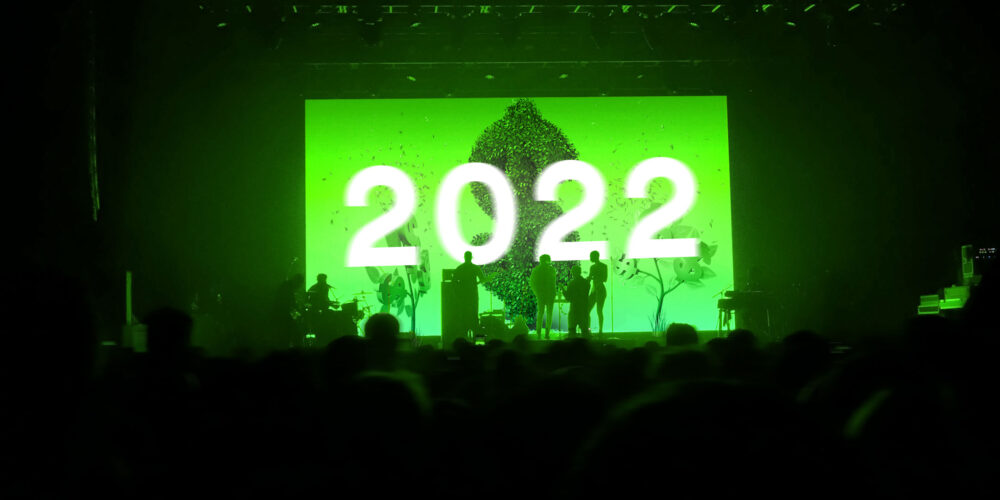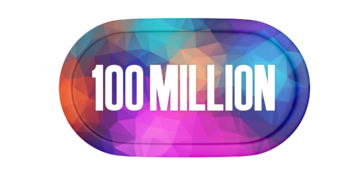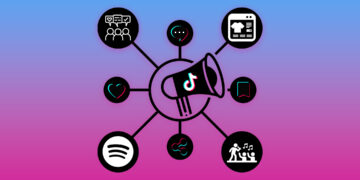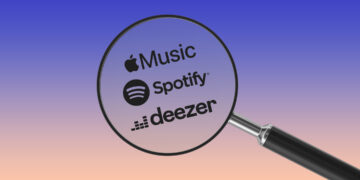Quo vadis, music industry?

- In which direction the music industry could develop in 2022
- Why alternatives to streaming are needed
- Whether Web 3.0, metaverse, blockchain and NFTs are an alternative
- Why the artist-fan relationship needs more focus
Looking back at the articles published by iGroove Magazine in 2021, you will find many that reporting on big successes: the music industry is growing, revenues are rising, more people are consuming music, and many are willing to pay for it, as well. There has also been positive news from the DSPs with rising numbers of users, profits, and investments. On the other hand, we often report on the problems that musicians are experiencing, as well – many of which are not necessarily new, but have been exacerbated by the pandemic.
To put it simply, two entirely different perspectives and realities have presented themselves: On one side, a growing and prospering industry, and on the other, the artists’ point of view that only sees a small portion of musicians actually profiting from streaming. With the loss of pay from concerts and, in part, also the sinking revenues from the publishing rights, the dream of turning music into a career remains unattainable for many artists, while others who managed to do so in the past must now give it up.
Before the end of the year, it is therefore well worth taking a look ahead and thinking about how to set the course for 2022 so that more of the generated revenues in the music industry actually gets distributed to those who make it all happen: the artists.
Alternatives to streaming?
Based on the market shares, this discussion will ultimately lead to the topic of streaming. There seems to be no alternative to it at the moment. But didn’t people use to think that about vinyl and CDs, as well? Both media are still around, but today, they are more comparable to merch like t-shirts or hoodies. People who buy CDs or vinyl do so to give artists additional support, but the majority of those who purchase physical records also use streaming. But what would it look like if streaming was only one of many viable alternatives to consume music?
While musicians used to go on tour to promote their CDs, they are now present on the streaming platforms, hoping to reach enough people who will go to their concerts. But this arrangement doesn’t really work, especially not in a pandemic. Let’s take a look at Spotify’s Loud & Clear Platform. Here, we learn that in 2020, there were 67,200 artists who made more than $5,000 per year on Spotify. Since there are around 8 million artists on Spotify in total, an income $500 per month ($6,000 per year), for instance, would mean that you are no longer part of the middle class, but actually the elite.
Even if Spotify were to double their payout per stream, the artist in our example would only make $1,000 per month. To reach a living wage of say, $4,000, the PPS would need to octuplicate. As we have shown in a recent post, this would lead to the collapse of the streaming industry. There is no doubt that the system needs to be optimized, so that more of the revenues actually end up in the pockets of the artists and songwriters. But it is fundamentally built in such a way that no more than a small fraction can earn a significant income from streaming. So, what the system really needs isn’t fine tuning, but rather, actual alternatives.
Reading up on these, you will soon come across terms like Web 3.0, Metaverse, Blockchain, and NFTs. Indeed, quite a few things suggest that this is where the future of the music industry lies. It is also foreseeable that there will be lots of developments in this area in 2022. However, in all likelihood, next year will still be far too early for a functioning, large-scale implementation of them.
Are Web 3.0, Metaverse & NFTs the future?
There are many who set their hopes for change in the music industry on Web 3.0, cryptocurrencies, NFTs or the Metaverse. But if your brain is hurting from just reading these terms, you are definitely not the only one. And herein currently lies the problem. If you as an artist haven’t fully figured out how tokens, cryptocurrencies, wallets, etc. work, then the average fan won’t have understood it either.
So now, you have the option of either trying to familiarize your fans with the subject matter, or you can hope for some crypto bro to buy your NFT while your real fans will largely be left out. At the moment, you won’t be able to take the majority of your fans on this journey, which might upset them. So, as an artist, you have to ask yourself whether you really want to jump on the bandwagon at this point in time, and if so, what benefit that brings to your fans.
Interesting projects are popping up in the Web 3.0 and NFT sectors practically every week. But many of them are still in their infancy or often, not even that. One of the first steps for these start-ups is to convince artists to join in. The second, even more important step, is to bring the fans on board, as well. As mentioned before, we are still quite a way from that, but it is entirely possible that 2022 will set the foundation for a direct connection between artist and fan without any middlemen.
2022 will also show whether NFTs will go down in history as a fleeting hype or whether they can actually establish themselves as a phenomenon suitable for the mass market. There have been a few success stories, and of course, these are the ones readily shouted from the rooftops. But there are also figures that give rise to a little doubt. Bloomberg, for instance, has shown that some music NFTs were re-sold for a much lower price than they were originally purchased for.
This could be a sign of a hype cooling down or, at second glance, a positive development. Perhaps the focus is shifting from pure speculation to real value both for the artists and the fans. The coming year will certainly give us more information about that. As already stated in our last NFT-post, we recommend keeping an eye on things but staying put for the moment.
Focus on the artist-fan relationship
In the past, fans were always willing to spend money for their favorite artists. But streaming has turned music into a basic commodity, where a few Dollars will get you everything you want. Of course, fans are still willing to spend money, but unfortunately, fan status is hardly expressible on a streaming platform, as it is equally difficult to monetize on social media. When it comes to streaming, the individual song takes center stage, but the focus needs to shift back to the artist-fan relationship.
The big question now is how to find out who the superfans are, how to reach them and ultimately, how to have them support you financially, as well. What we are talking about here are revenues that are extremely small for the industry, but hugely important for the artists. If you can find 600 subscribers who support you with 5 Euros per month, these 600 people will earn you the same amount as you would from one million monthly streams. These micro-communities are entirely irrelevant to the music industry, but they are an actual way for artists to make a living.
In this discussion, it is worth taking a look at China. The streaming services of Tencent Music (QQ Music, Kugou, and Kuwo) offer users the option of transferring small amounts of money to their favorite artists. This feature is used so much that only 30% of revenues on Tencent stems from subscriptions and ad revenues, while the rest is made up of commissions from the transfers users make to artists. Of course, one could argue that tips like these are more of a traditional fixture in China compared to other places. But platforms like Twitch prove that they can work just as well in the Western world.
Additional incentives could boost the concept even more. For instance, for a small monetary amount, fans can stream an album earlier or gain access to other bonus features. This gives fans the opportunity to show their support on streaming platforms, too, and opens a new source of revenue for artists.
Of course, there are already digital fan clubs that exist on platforms like Patreon. But that means that musicians have to enter and work with yet another ecosystem. As we all know, it is not easy to direct users from one platform to another. Many artists already fail at convincing their TikTok followers to listen to their music on Spotify. Having to ask them to go on Patreon on top of it all, poses yet another challenge.
It would thus be easier to have such functions integrated into Spotify and similar platforms. Of course, the drawback is an even bigger level of dependency on those streaming services and thus on these tech giants like Spotify, Apple, Amazon, or Google. These companies already wield enormous, centralized power in the music industry today, and their focus lies primarily on their own products and the interests of their shareholders, not on the payouts for the artists, songwriters, producers, or independent labels.
This isn’t exactly surprising; Apple, Amazon, and Google are no music companies, and when it comes down to it, Spotify is also more of a tech company than a music business. Assuming these corporations don’t offer additional monetization options for musicians, the artists will have to reduce their dependency on these giants and find direct ways to get to their fans. There are many interesting projects, ideas, and opportunities that are being developed right now, and 2022 will show which of them will be able to establish themselves. iGroove Magazine will keep an eye on things for you in the coming year, as well.











